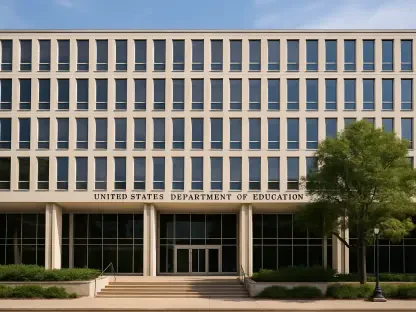The education system in California faces a recurring crisis each year: the widespread issuance of preliminary layoff notices. This annual ordeal is emblematic of the financial instability plaguing school districts across the state. Despite various mitigation efforts, the reality of constant financial instability continues to impact educators, students, and the overall quality of education.
The Growing Prevalence of Layoff Notices
Increasing Layoff Numbers and Impact on Staff
This year, over 2,300 school employees in California, including more than 2,000 credentialed staff such as teachers, school nurses, and librarians, have received preliminary layoff notices. This unfortunate occurrence marks a troubling trend in which layoffs have become an almost predictable annual event, severely impacting staff morale and causing widespread instability within schools. The repeated issuance of pink slips each year is not a result of sudden changes but an ongoing issue embedded in the fiscal framework of the educational system. The consistent nature of these layoffs reflects the chronic financial difficulties that school districts have faced year after year.
Teachers and other credentialed staff that receive these preliminary layoff notices often enter a period of profound uncertainty. With their professional futures hanging in the balance, their ability to maintain a stable and conducive learning environment is significantly hampered. The stress and demoralization of considering potential unemployment take a toll on their effectiveness and commitment. Moreover, this pattern of recurrent layoffs creates an atmosphere of persistent instability, reducing the predictability and security that is essential for both educators and students to thrive.
Legislative Requirements and Demoralization
State law plays a crucial role in this annual practice, mandating that school districts issue potential layoff notices by March 15 to any employees who might face layoffs by the end of the school year. This legal requirement is intended to provide a buffer period until mid-May, the final deadline for issuing formal layoff notices to tenured teachers. However, while the intent behind the law is to grant districts some flexibility in financial planning, it inadvertently perpetuates a cycle of uncertainty and instability within the education sector.
The issuance of these preliminary layoff notices by the statutory deadline has been heavily criticized for creating a climate of uncertainty and demoralizing educators. Each year, teachers and school staff find themselves in a state of limbo, awaiting final decisions that could drastically alter their professional and personal lives. This yearly ritual not only affects the mental and emotional well-being of the educators but also compromises the stability of the educational environment. The California Teachers Association (CTA) has been a vocal critic of this practice, emphasizing that these annual notifications harm the overall school community and disrupt student learning conditions. The resulting environment of insecurity and instability detracts from the educational mission and diminishes the overall quality of education delivered to students.
Financial Struggles of School Districts
Declining Enrollment and Expired Federal Funding
One of the main contributors to the ongoing layoffs in California’s education system includes declining student enrollment numbers. As student populations decrease, the funding that districts receive from the state, which is often based on enrollment figures, also dwindles. This reduction in financial resources leaves districts struggling to balance their budgets, necessitating difficult decisions about staffing and resources. Furthermore, the expiration of the federal COVID-19 relief funds, which temporarily bolstered school budgets, has compounded the financial difficulties faced by district administrations.
The cessation of these supplementary federal funds has left school districts grappling with significant budget shortfalls. The initial influx of COVID-19 relief allowed districts to temporarily circumvent layoffs and maintain higher staffing levels during the pandemic. However, as these funds have expired, the financial strain has returned, forcing districts to take austerity measures. The combination of these factors has placed several school districts in a precarious financial situation, leading to the necessity of issuing preliminary layoff notices as a means of managing their limited budgetary resources. As a result, the broader financial instability within the educational framework is both a cause and a consequence of these recurring layoffs.
Specific District Challenges
Specific districts such as Pasadena Unified, San Francisco Unified, and Santa Ana Unified are exemplars of the broader financial distress plaguing the state’s education system. These districts, facing substantial budget deficits, have resorted to issuing preliminary layoff notices despite employing numerous mitigation strategies. Pasadena Unified has grappled with a multimillion-dollar deficit, employing measures like early retirement incentives and buyouts to reduce staff numbers without resorting to abrupt layoffs. However, these measures have proven only partially effective, necessitating the issuance of layoff notices.
In San Francisco Unified, the budget shortfall has reached staggering proportions, with the district struggling to close a deficit of over $100 million. The financial constraints have compelled the district to make difficult decisions, including at one point offering buyouts to mitigate the need for staff reductions. Despite these efforts, the structural deficit has demanded more drastic measures, culminating in significant layoffs. Similarly, Santa Ana Unified has faced an uphill battle against economic pressures, including a budget deficit that has required desperate mitigation measures. The recurring issuance of layoff notices in these districts underscores the tenuous financial footing on which many California school districts stand, revealing a systemic issue that seems insurmountable under current economic conditions.
Mitigation Efforts and Broader Economic Context
Efforts to Avoid Layoffs
In an attempt to avoid large-scale layoffs and sustain the educational environment, some districts have adopted concerted efforts involving early retirement incentives and offering buyouts to eligible employees. These strategic initiatives aim to reduce staff numbers in a more controlled and voluntary manner, mitigating the shock and disruption that accompanies sudden mass layoffs. For instance, the use of early retirement incentives is a discretionary measure designed to align workforce numbers with reduced budgetary allocations by encouraging senior educators to retire earlier than planned.
By offering buyouts, districts provide financial packages to incentivize voluntary departures, ultimately lessening the need for compulsory layoffs. These strategies, while thoughtful and protective to some extent, have proven to be partial solutions—they soften the impact but do not eliminate the fundamental financial stressors. The unique challenges faced during the pandemic further complicated these efforts, as state stipulations prevented layoffs, leading to temporary overstaffing. As financial pressures mount with the cessation of federal relief funds, districts must revisit and sometimes revise these measures, balancing the dual priorities of fiscal responsibility and maintaining educational quality.
Overstaffing and Structural Deficits
During the pandemic, many districts maintained high staffing levels due to state stipulations preventing layoffs. While commendable for its immediate relief, this directive resulted in temporary overstaffing. As normalcy resumed and federal relief funds expired, the overstaffing problem became a financial burden, leading to structural deficits in district budgets. This dilemma presents a complex scenario where districts, despite their best efforts to circumvent layoffs, are pushed into a corner where staff reductions become almost inevitable to realign their budgets with actual enrollment and financial conditions.
The structural deficits caused by overstaffing have resulted in districts needing to take hard decisions to avoid financial insolvency. These decisions often involve re-evaluating spending priorities and identifying other cost-saving measures beyond staff layoffs. Nevertheless, with staff salaries and benefits making up a vast majority of the overall expenditure, achieving fiscal balance without resorting to layoffs becomes a nearly insurmountable challenge. The broader economic context further aggravates this situation, as districts attempt to navigate the aftereffects of the pandemic and the pressures of dwindling state funding.
Impact on Educational Environment and Teacher Recruitment
Disruptions to Learning and Educational Communities
The recurring issuance of layoff notices has far-reaching effects on the educational environment and school communities. These notices create an environment of perpetual uncertainty and instability, directly impacting the learning conditions of students and the working conditions of staff. The disruption caused by the potential loss of teachers and other key personnel undermines the sense of coherence and continuity vital for a productive educational experience. Both students and staff find themselves grappling with the potential upheaval, thereby impeding their ability to maintain focus and achieve academic goals.
The anxiety and stress caused by potential layoffs do not merely affect the staff receiving these notices but ripple throughout the entire school community. Students’ learning experiences are inevitably affected when teachers and other staff members face uncertainty about their job security. The lack of stability can disrupt classroom activities, interfere with the planned curriculum, and create an atmosphere devoid of the consistency and predictability necessary for effective education. The broader impact is a degradation of the overall educational environment, leading to diminished student outcomes and compromised school performance.
Challenges in Teacher Recruitment
The recurrent layoff notices have broader implications that extend to the recruitment of prospective teachers. The perception of job insecurity and the annual cycle of potential layoffs deter individuals from considering careers in education, particularly in California’s public school system. This situation aggravates the existing teacher shortages, creating a challenging landscape for recruiting qualified professionals. Areas such as STEM (science, technology, engineering, and mathematics), special education, and language learning are particularly hard-hit, as these fields already face significant recruitment difficulties.
The annual layoff cycle creates a deterrent for potential educators who might otherwise consider entering the profession. New graduates and career changers are less likely to pursue opportunities within a system that appears unstable and unpredictable. This challenge compounds existing shortages, making it increasingly difficult for districts to fill essential and specialized roles. The broader implications include a diminished capacity for districts to offer robust and comprehensive educational programs, ultimately affecting the quality of education and the educational equity within the state. The overarching issue remains the necessity to attract and retain dedicated and skilled educators amid a challenging and often unstable fiscal environment.
Conclusion: Persistent Fiscal Instability
The education system in California faces a recurrent crisis every year: the issuance of widespread preliminary layoff notices. This annual problem symbolizes the financial instability troubling school districts throughout the state. Despite various attempts at mitigation, the ongoing financial uncertainty continues to affect teachers, students, and the overall quality of education. Numerous efforts have been made to address the issue, from seeking additional funding to attempting budget reforms, yet the problem persists. The impact is far-reaching, with educators enduring job insecurity, students facing potential disruptions in learning, and school administrations grappling with the challenges of maintaining high educational standards. The situation demands urgent attention from policymakers to safeguard the future of California’s education. The cycle of uncertainty must be broken to ensure stability and consistency in providing quality education statewide.









